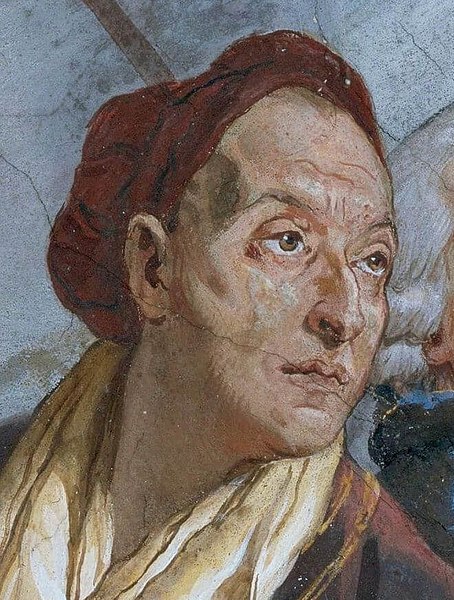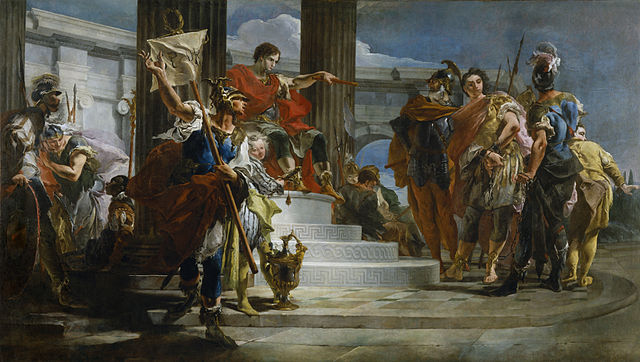The Immaculate Conception (Tiepolo)
The Immaculate Conception is a painting by Italian painter Giovanni Battista Tiepolo (1696–1770). The painting was one of seven altarpieces commissioned in March 1767 from Tiepolo by King Charles III of Spain for the Church of Saint Pascual in Aranjuez, then under construction. This was originally an Alcantarine (Franciscan) monastery that was later assigned to the Conceptionist nuns.
The Immaculate Conception (Tiepolo)
Allegory of the Immaculate Conception, c. 1769, National Gallery of Ireland
Modello, 1767, Courtauld Institute of Art
Giovanni Battista Tiepolo
Giovanni Battista Tiepolo, also known as Giambattista Tiepolo, was an Italian painter and printmaker from the Republic of Venice who painted in the Rococo style, considered an important member of the 18th-century Venetian school. He was prolific, and worked not only in Italy, but also in Germany and Spain.
Self-portrait (1750–1753), from the ceiling fresco in the Würzburg Residence
The Glory of St. Dominic, 1723
Scipio Africanus Freeing Massiva shows Massiva, the nephew of a prince of Numidia, being released after capture by Scipio Africanus. Walters Art Museum.
The Banquet of Cleopatra, 1743–44, National Gallery of Victoria, Melbourne







